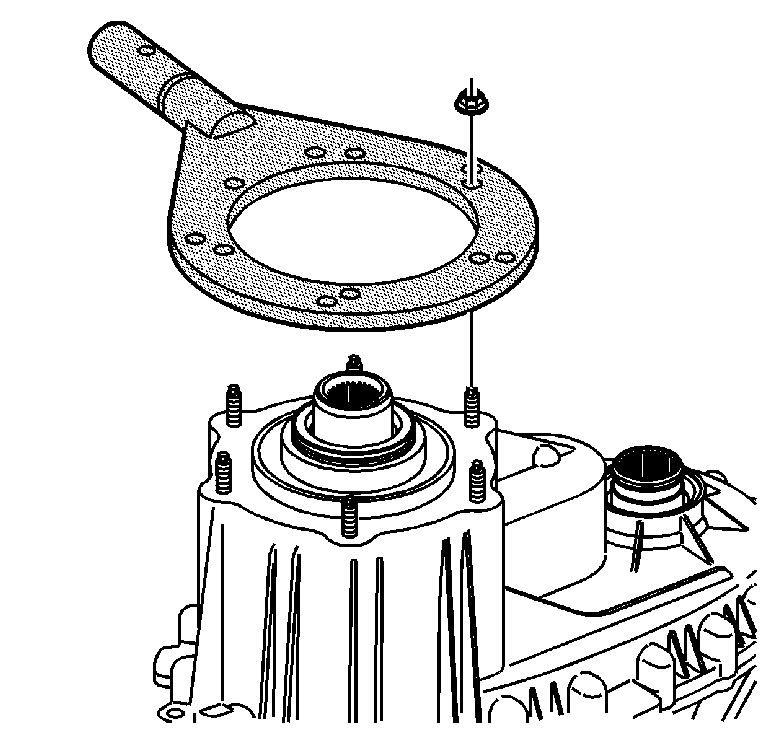
- Attach the J 45759
to
the transfer case using the adapter studs. All of the transfer case disassembly procedures
can be performed with the case mounted to the J 45759
.

- Mount the J 3289-20
(1)
to a sturdy workbench.
- Install the J 45759
(2)
into J 3289-20
(1) and secure with pivot
pin.

- Remove the drain plug (2) and the fill plug (1).
- Drain the fluid from the transfer case.
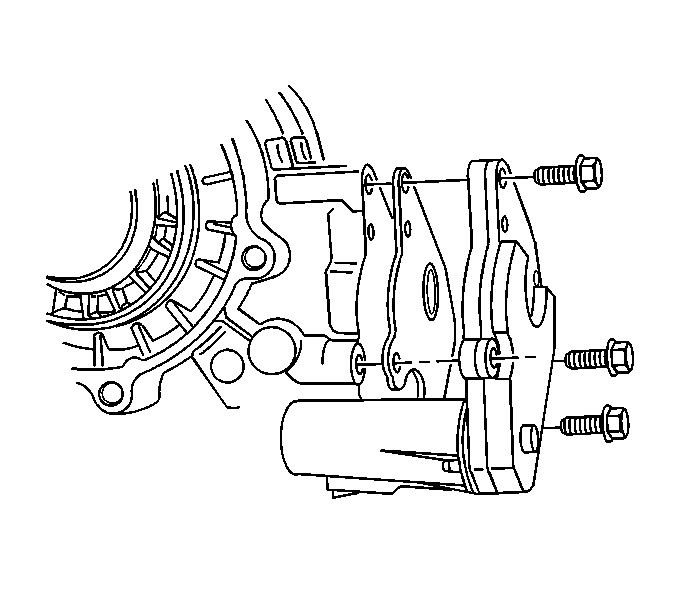
- Remove the actuator encoder motor mounting bolts.
- Remove the actuator encoder motor assembly.
- Remove the actuator insulator.
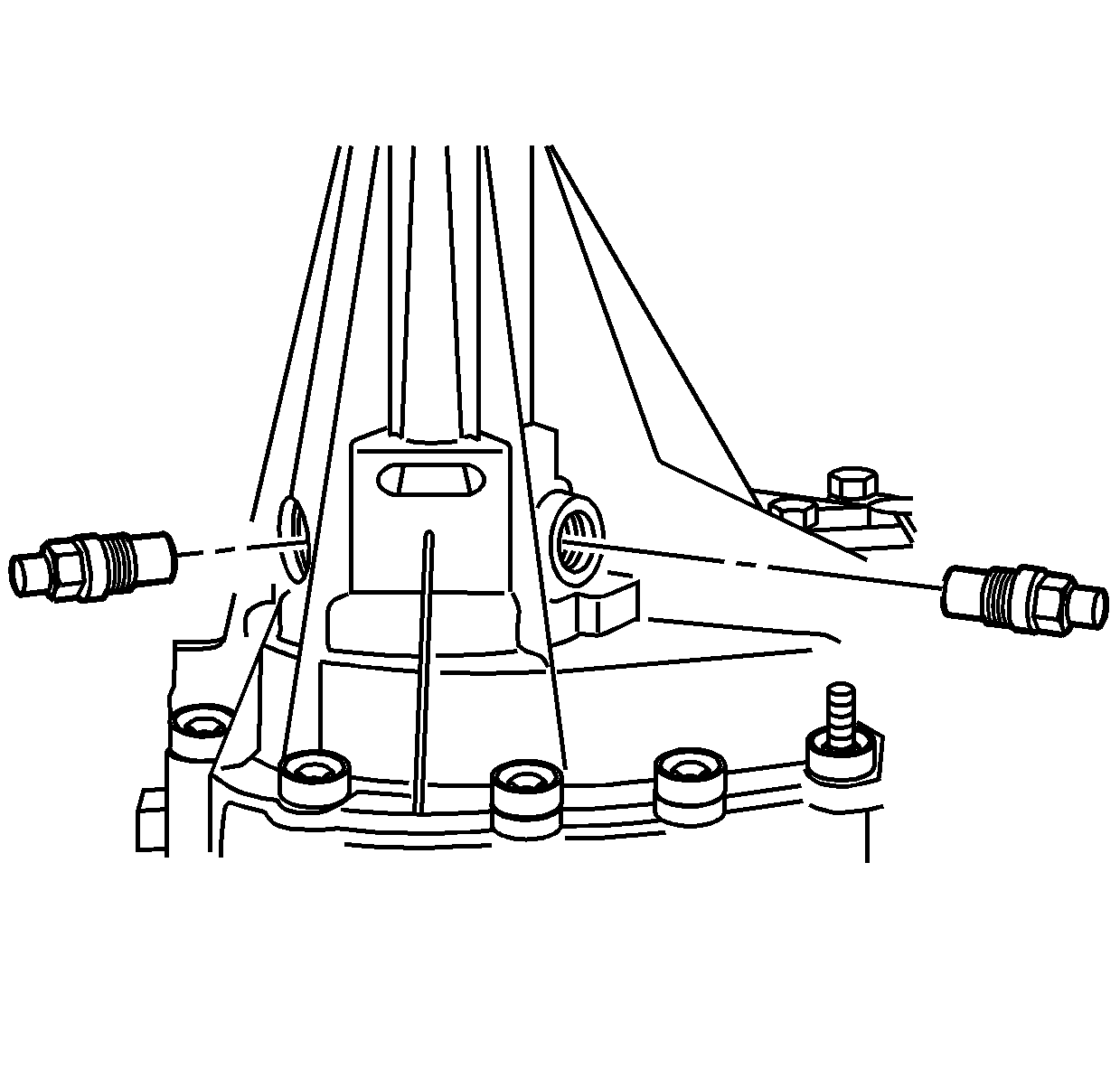
- Remove the left rear speed sensor.
- Remove the right rear speed sensor.

- Remove the front speed sensor.
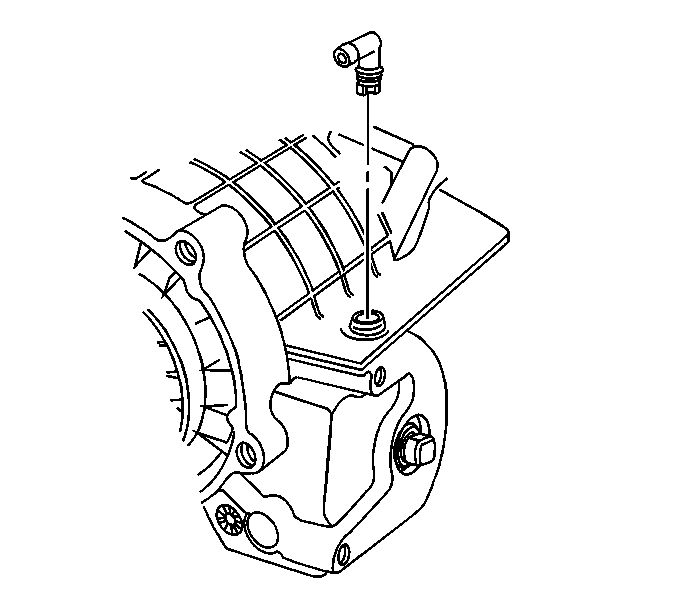
- Remove the vent tube, only if it is damaged.
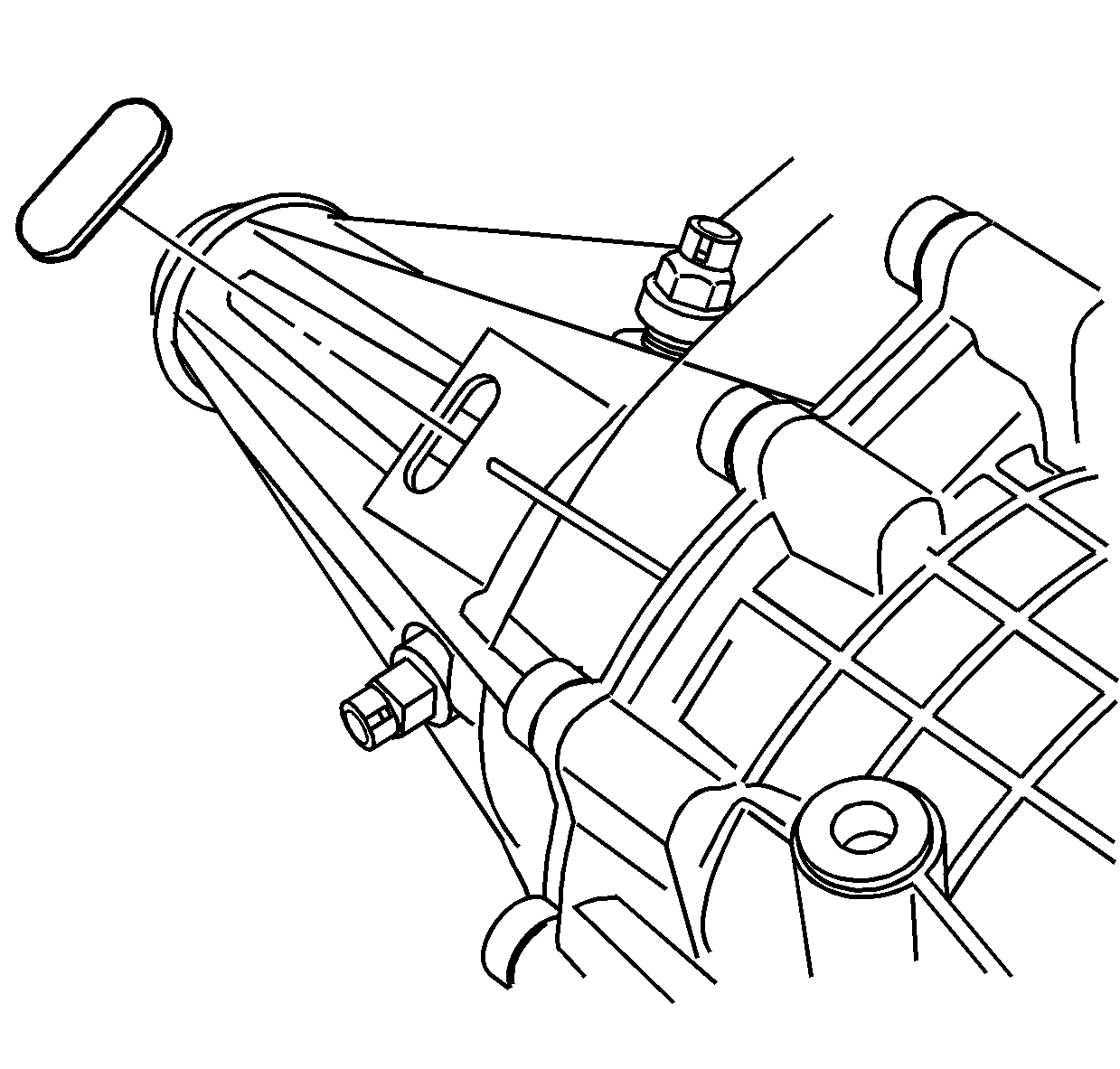
- Remove the rubber plug.
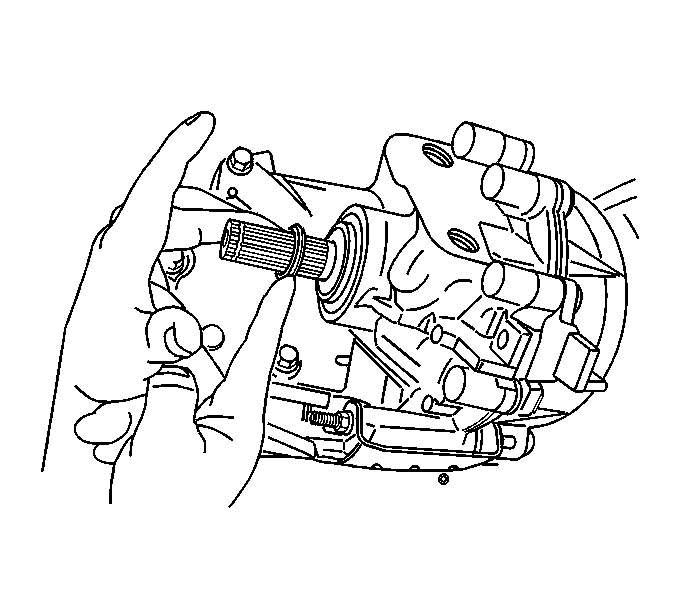
- Remove the front output shaft dust seal.
Notice: Refer to Transfer Case Seal Removal Notice in the Preface section.
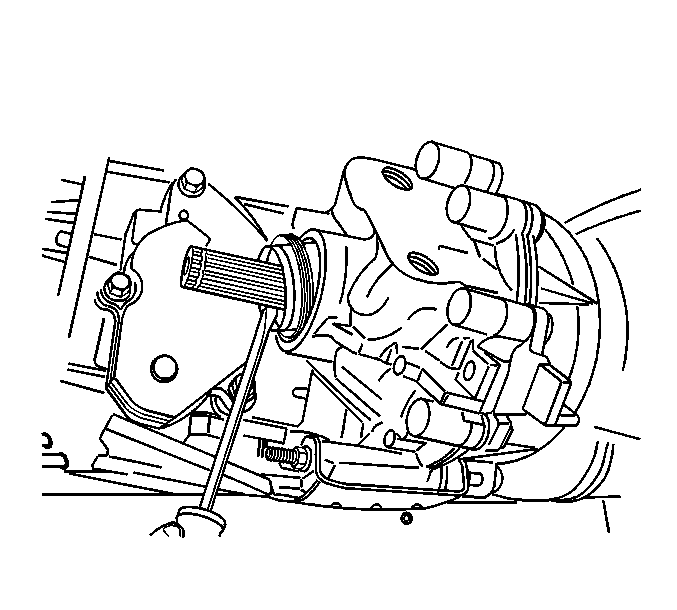
- Remove the front output shaft seal.
Notice: Refer to Transfer Case Seal Removal Notice in the Preface section.

- Remove the input shaft seal.
Notice: Refer to Transfer Case Seal Removal Notice in the Preface section.
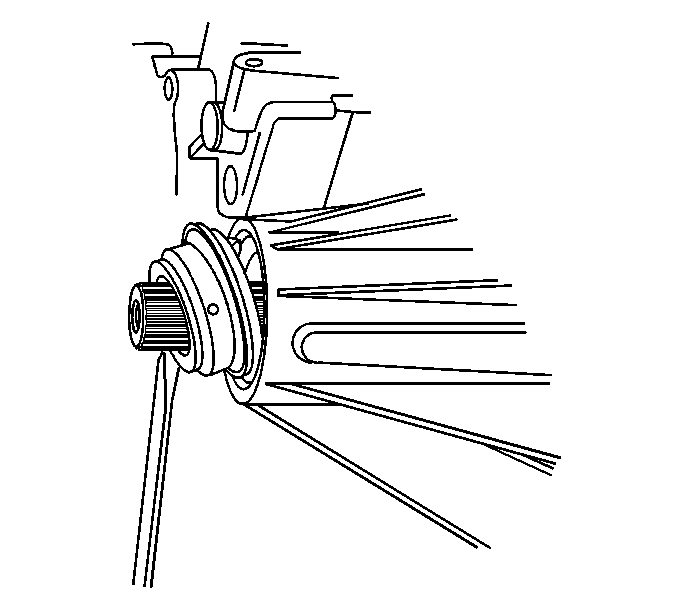
- Remove the rear output shaft seal.
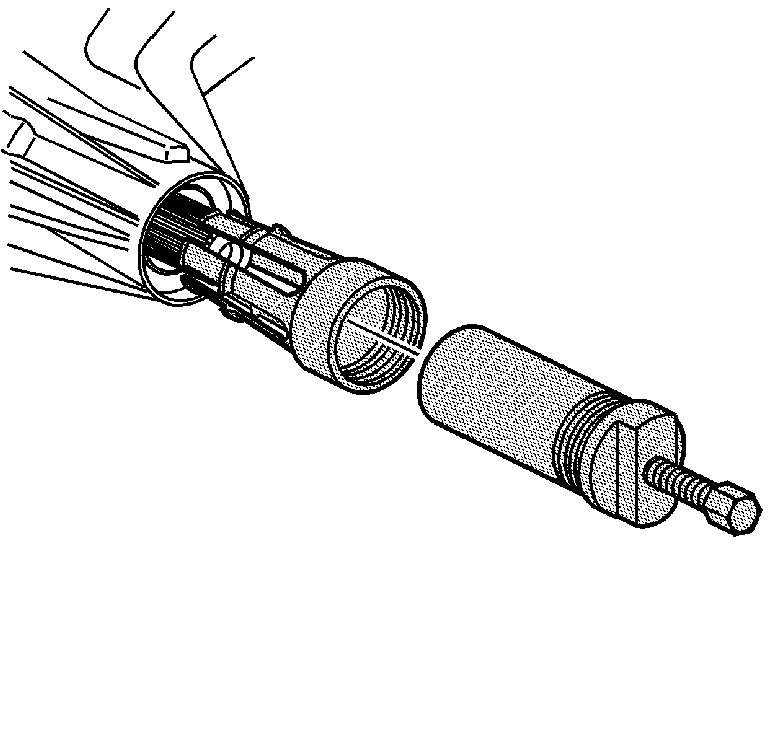
- Inspect the rear bushing for scoring or wear.
- Using the J 45380
, remove the rear
bushing.
| 19.1. | Install the finger section of the J 45380
in front of the bushing. |
| 19.2. | Install the tube and forcing screw assembly to the finger section. Ensure
the forcing screw is backed out. |
| 19.3. | Using a wrench on the forcing screw, remove the rear bushing. |

Important: The magnesium transfer cases are using new
style bolts that have a cup style washer. The cup washer is only available with the
bolt. If the cup washer is not damaged the bolt can be used again.
- Remove the transfer case retaining bolts and studs.
- Mark the location of the studs and brackets.
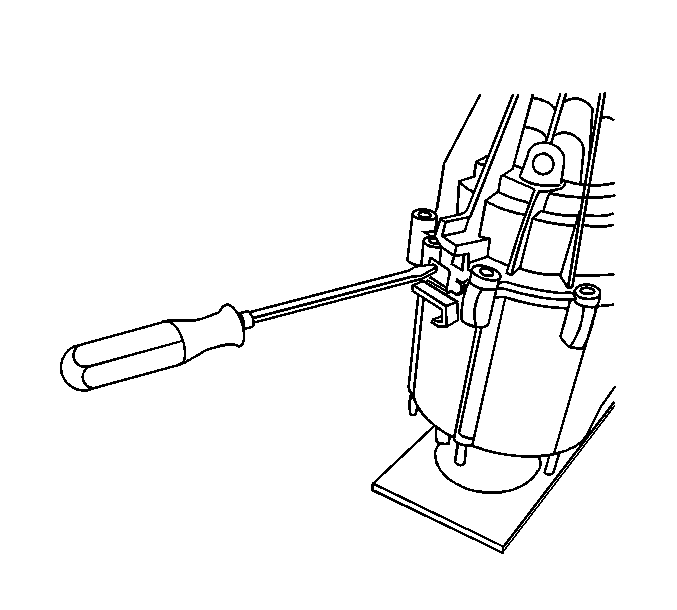
- Insert a flat blade screwdriver in the slot on the
left side of the transfer case.

- Insert a flat blade screwdriver in the slot on the
right side of the transfer case.
- Apply equal pressure on both of the screwdrivers, in a downward motion,
and separate the front and rear case halves.
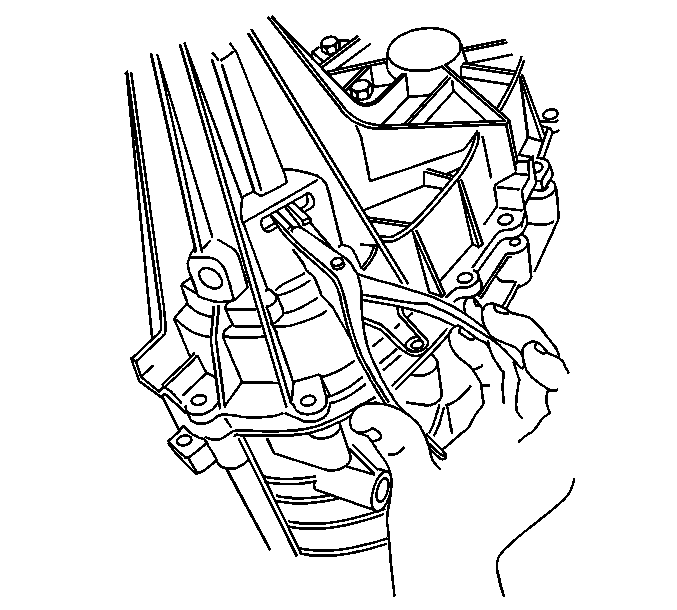
- Insert snap ring pliers in the slot.
- Using the snap ring pliers, open the retaining ring for the rear output
shaft bearing.
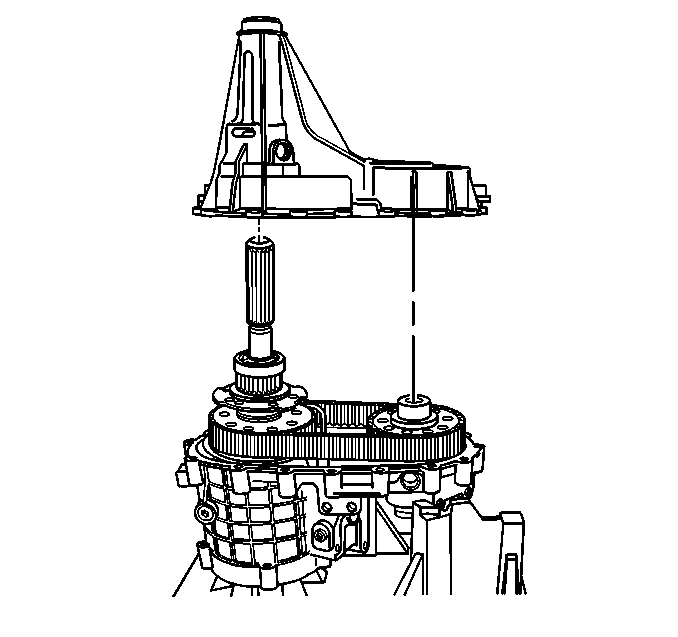
- Remove the rear case from the front case.
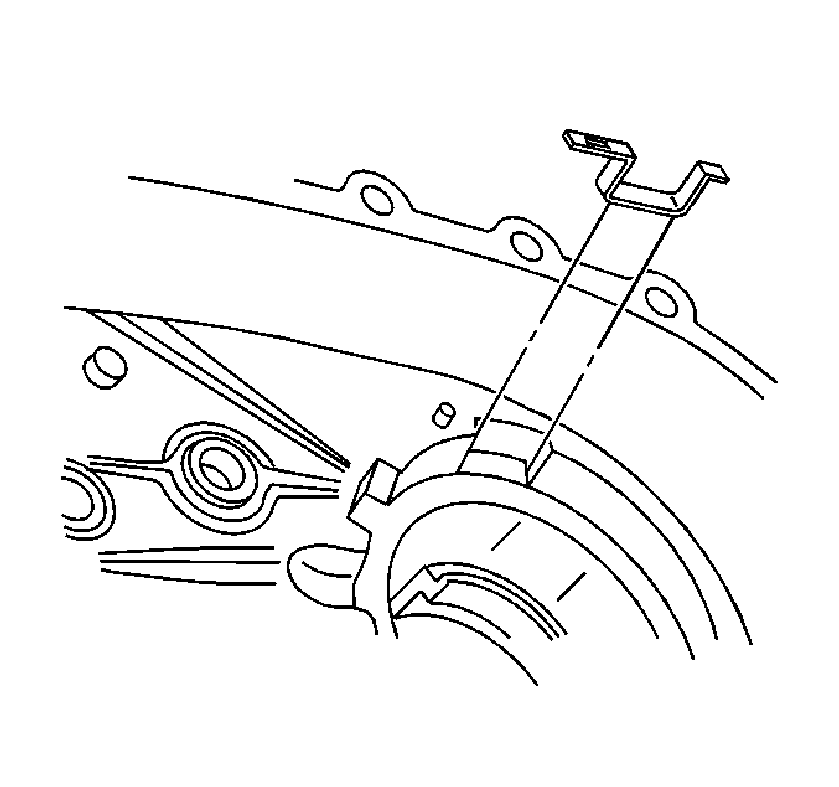
- Remove the oil pump wear sleeve, only if it is worn
or damaged.
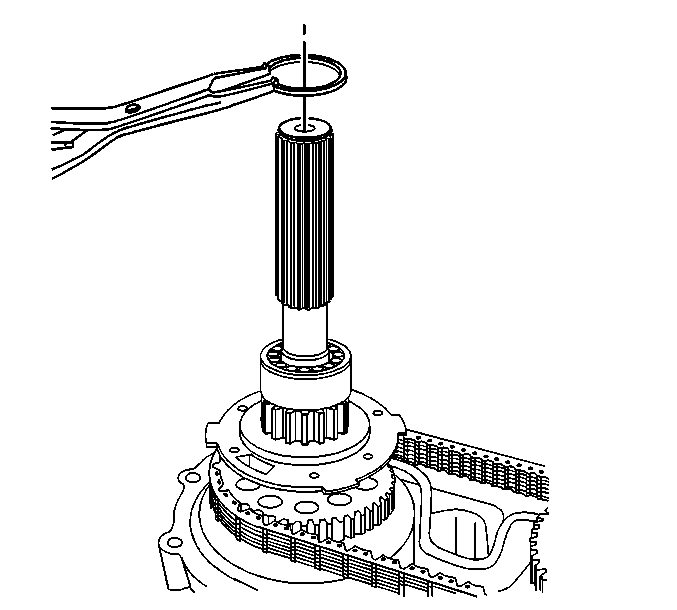
- Remove the rear output shaft bearing retaining ring.
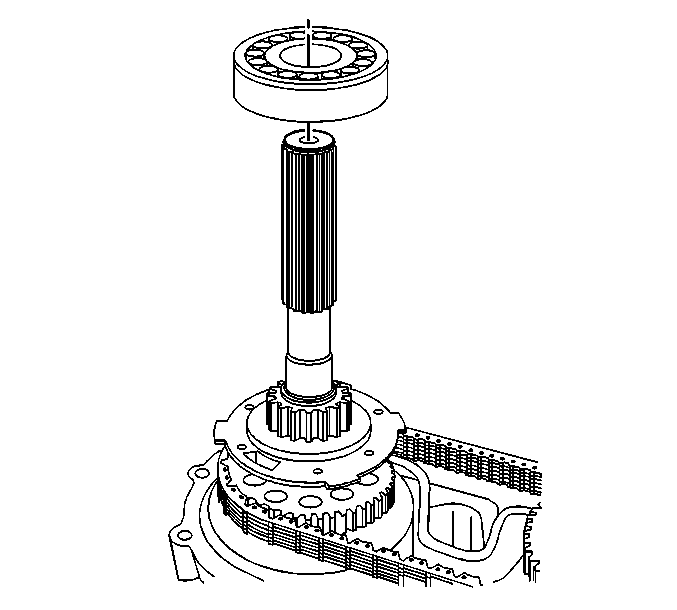
- Remove the rear output shaft bearing.
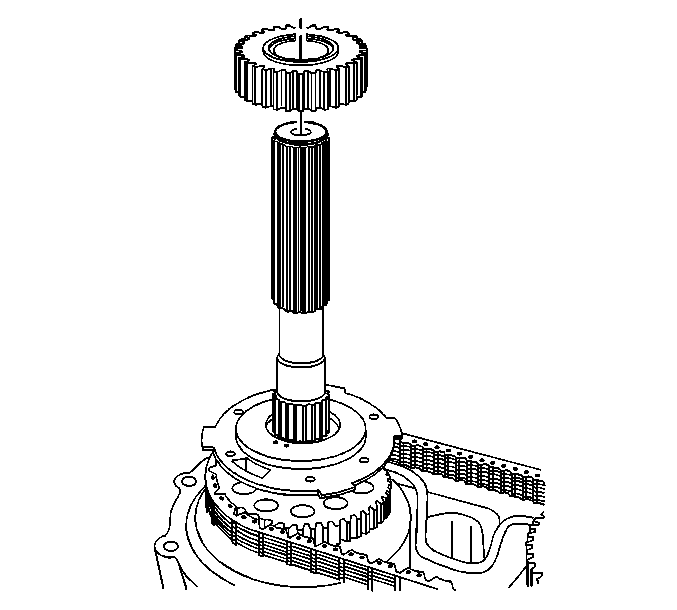
- Remove the rear output shaft speed sensor reluctor
wheel.
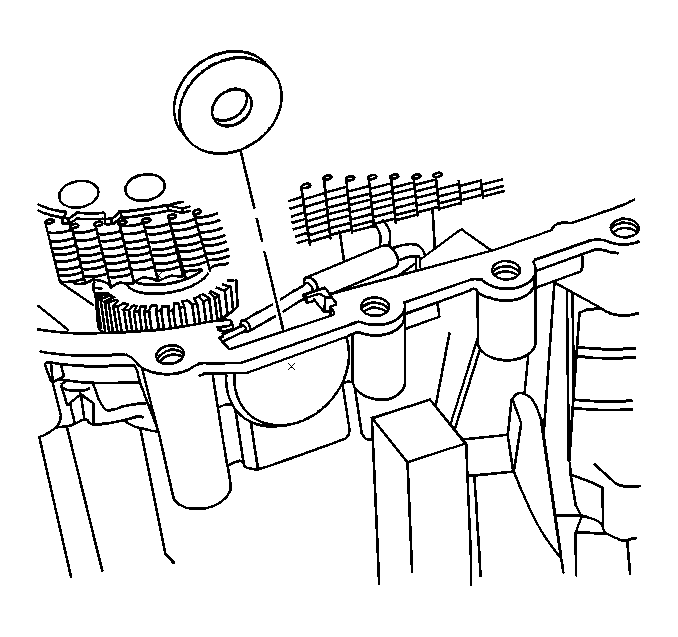
- Remove the magnet.
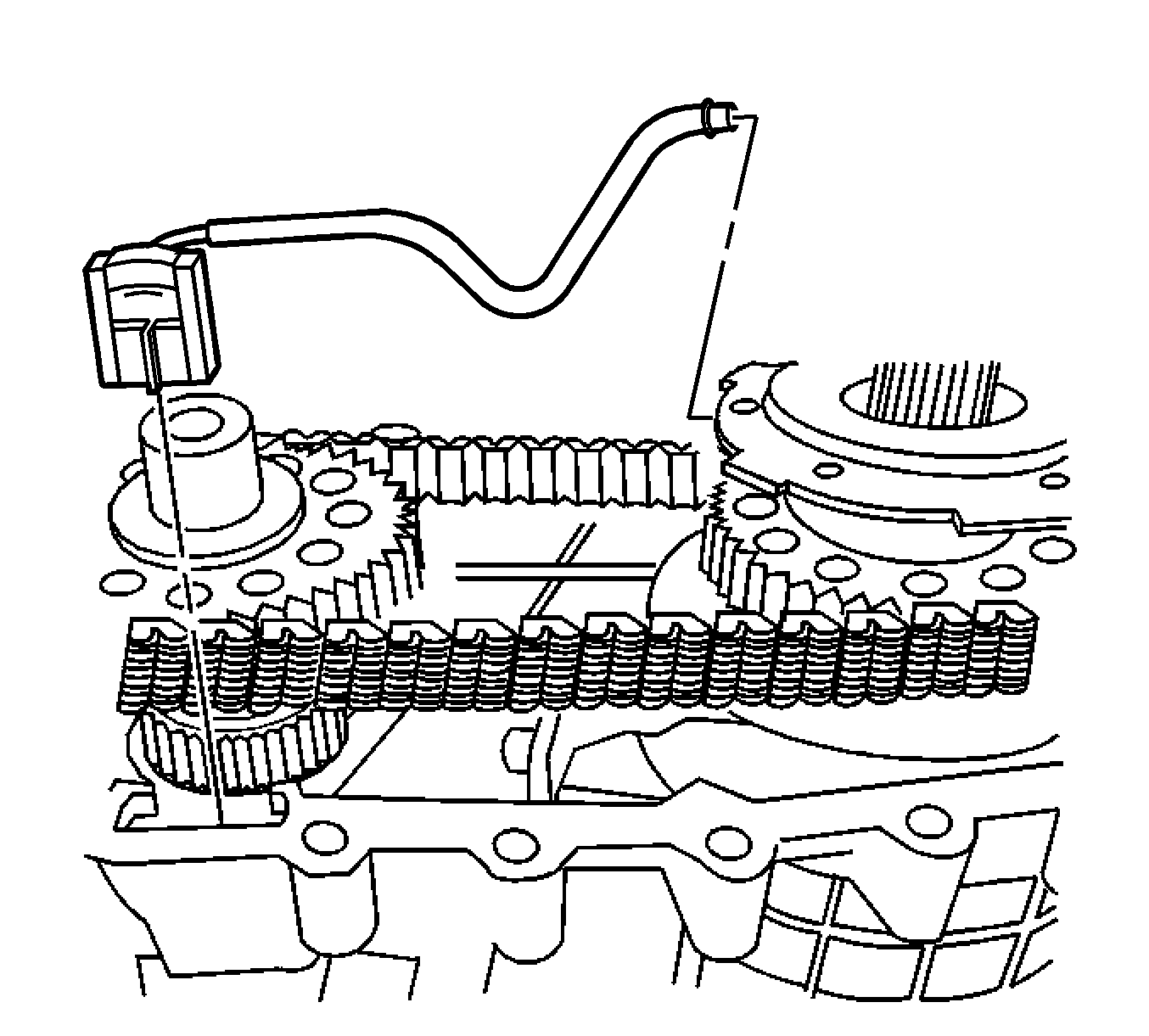
- Remove the oil pump suction pipe assembly. Do not
remove the screen from the pipe.
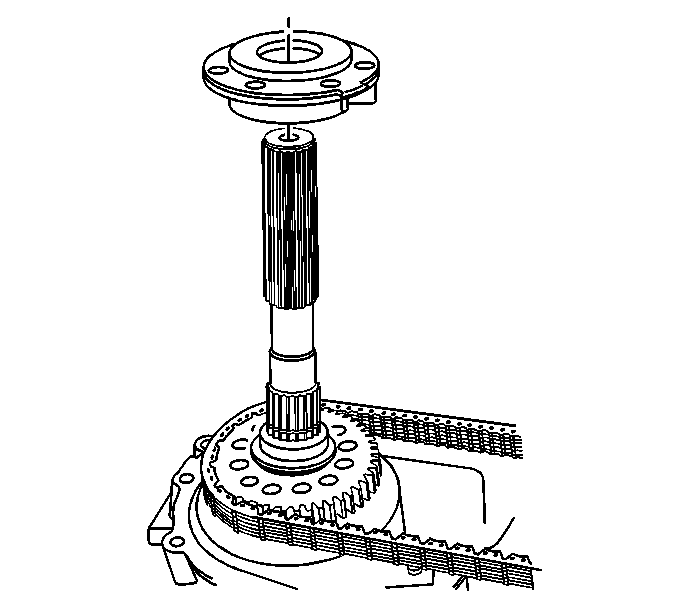
- Remove the oil pump assembly.
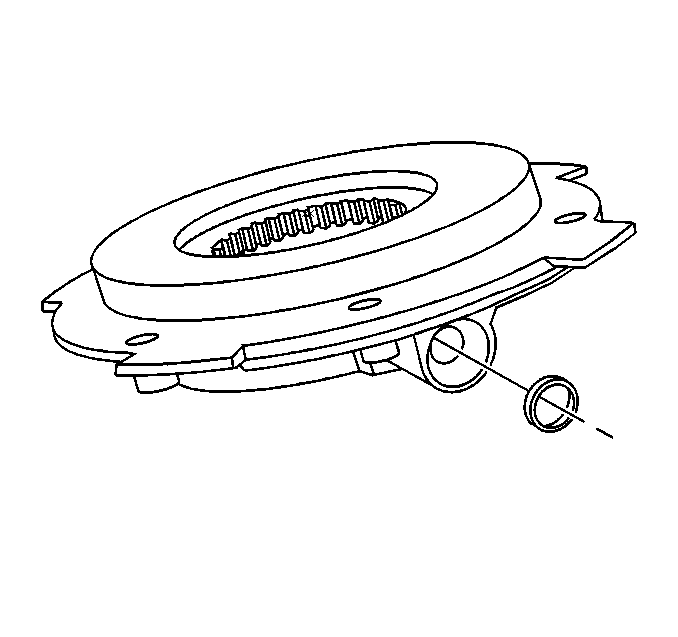
- Remove the oil pump suction pipe seal.
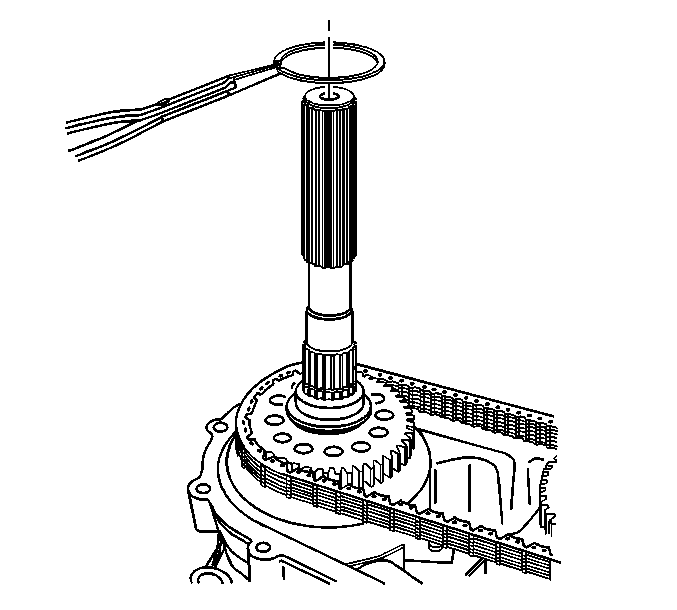
- Remove the drive sprocket retaining ring.
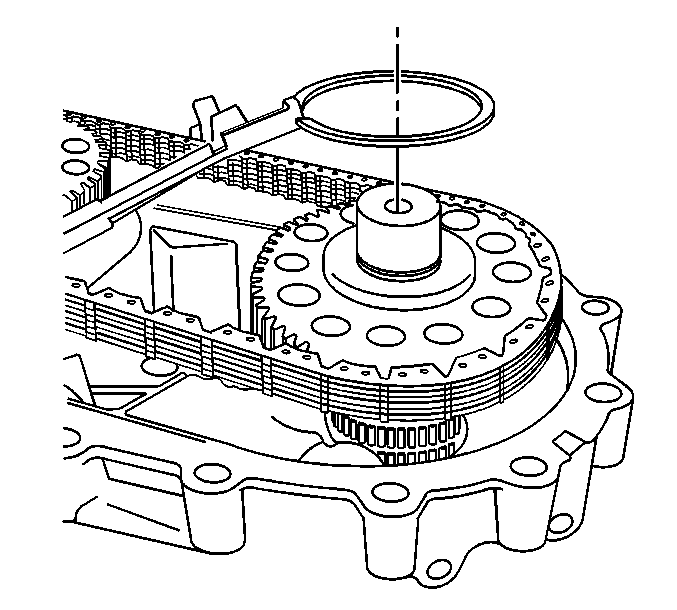
- Remove the driven sprocket retaining ring.
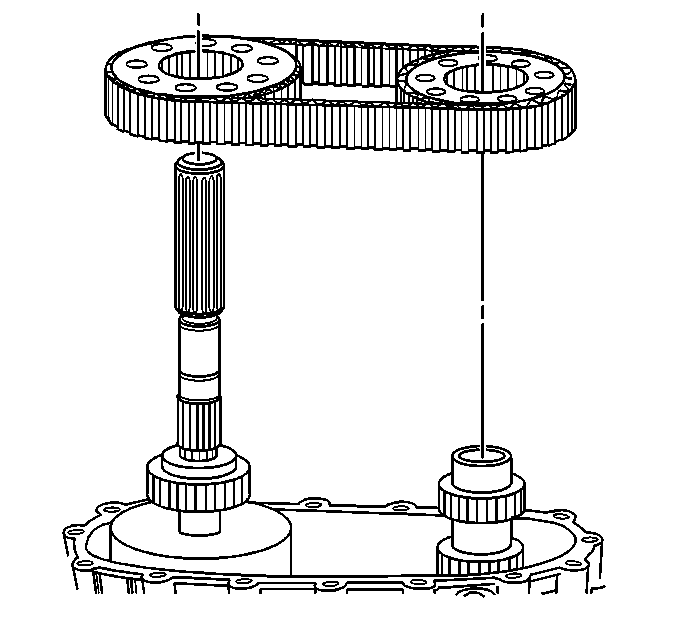
Important: If the drive chain and sprockets are to be
used again, mark the relationship of the drive chain to the sprockets for proper
alignment of the wear pattern.
- Remove the drive chain and sprockets.
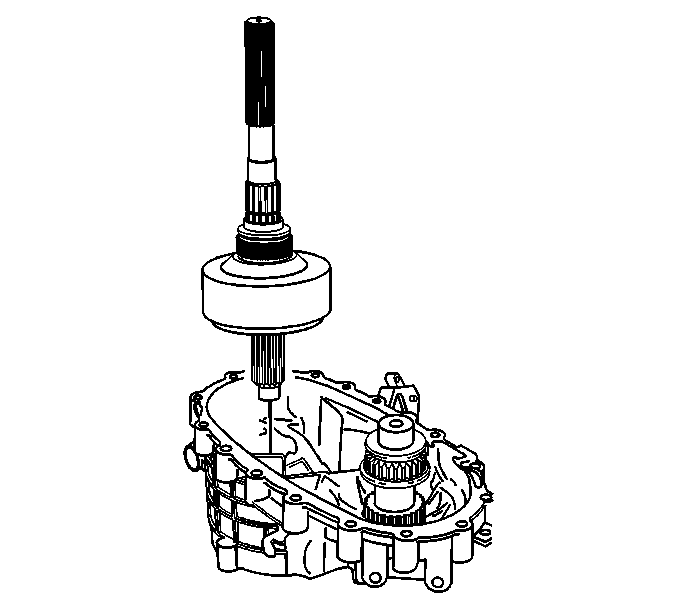
- Remove the rear output shaft assembly.
- Mount the rear output shaft in a soft-jaw vise with the input
end up.

- Remove the clutch retaining ring.

- Remove the clutch pressure plate assembly.
- Remove the clutch pressure plate spring.
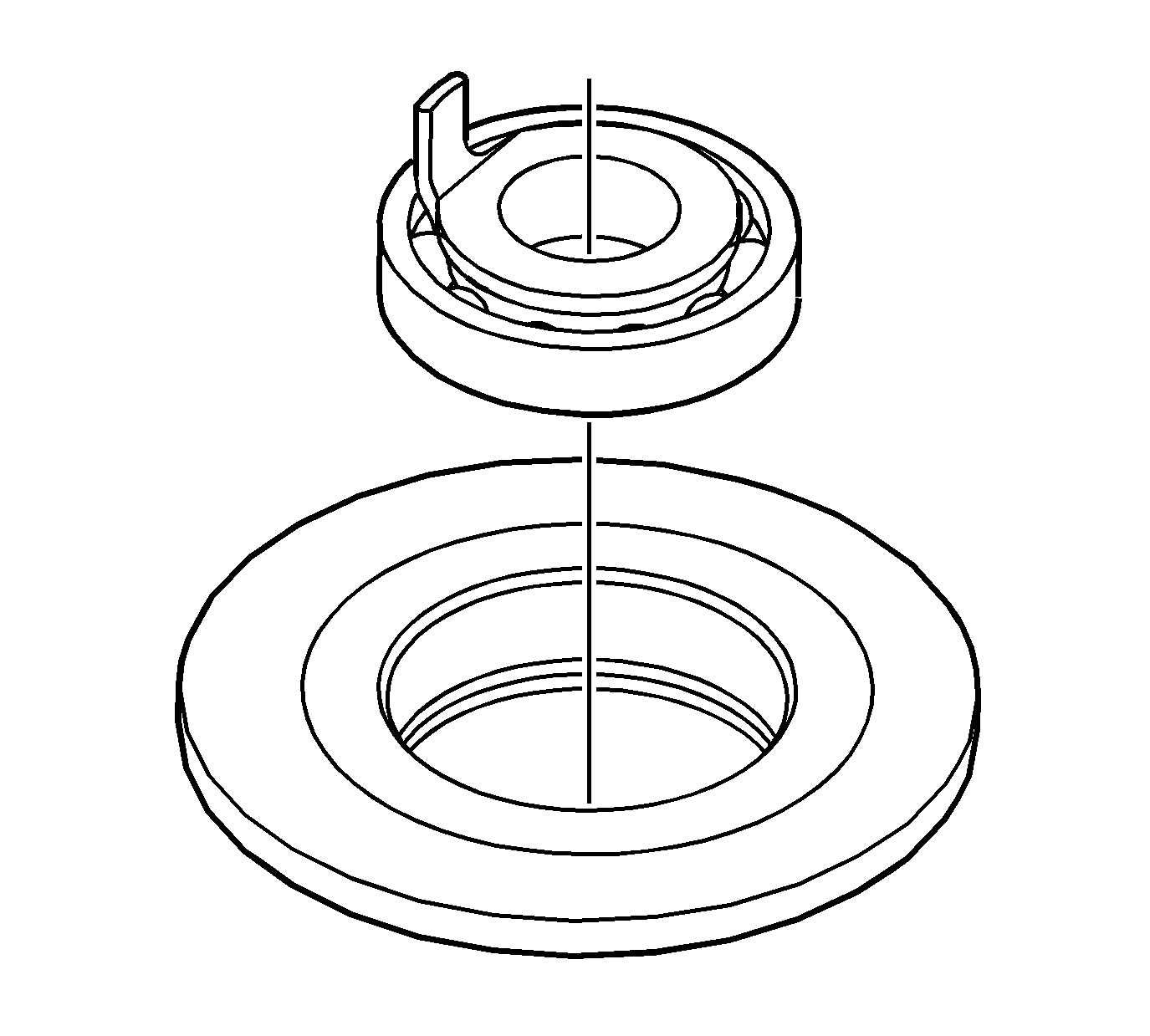
- Remove the clutch pressure plate bearing, with the
clutch bearing inner support, from the clutch pressure plate.
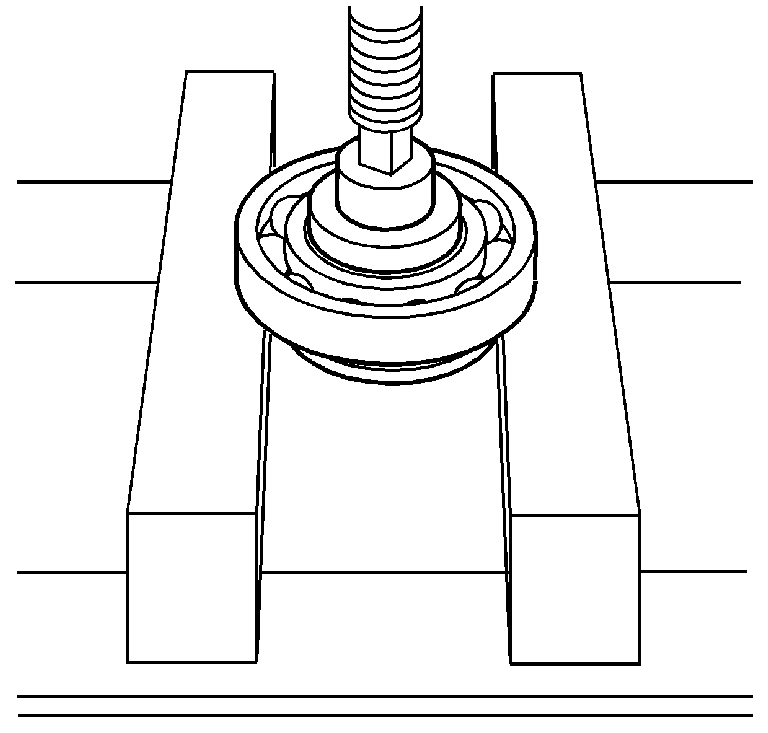
- Inspect the bearing for being faulty. Refer to
Transfer Case Cleaning and Inspection
.
- If the bearing is faulty, using a hydraulic press and a suitable adapter,
remove the clutch pressure plate bearing from the clutch bearing inner support.
- Discard the bearing after removal.
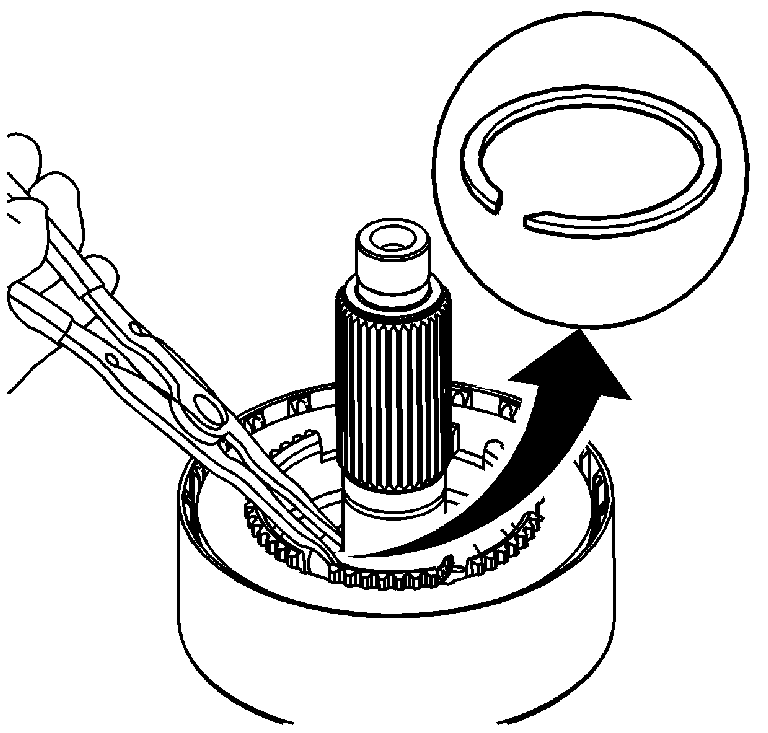
- Remove the clutch hub retaining ring.
- Remove the clutch housing and hub assembly from the rear output shaft.

- Turn the clutch assembly over on a workbench.
- Remove the clutch housing.
Important: Do not remove the oil restrictor plate. The
oil restrictor plate is only serviced with the clutch hub.
- Remove the clutch hub.
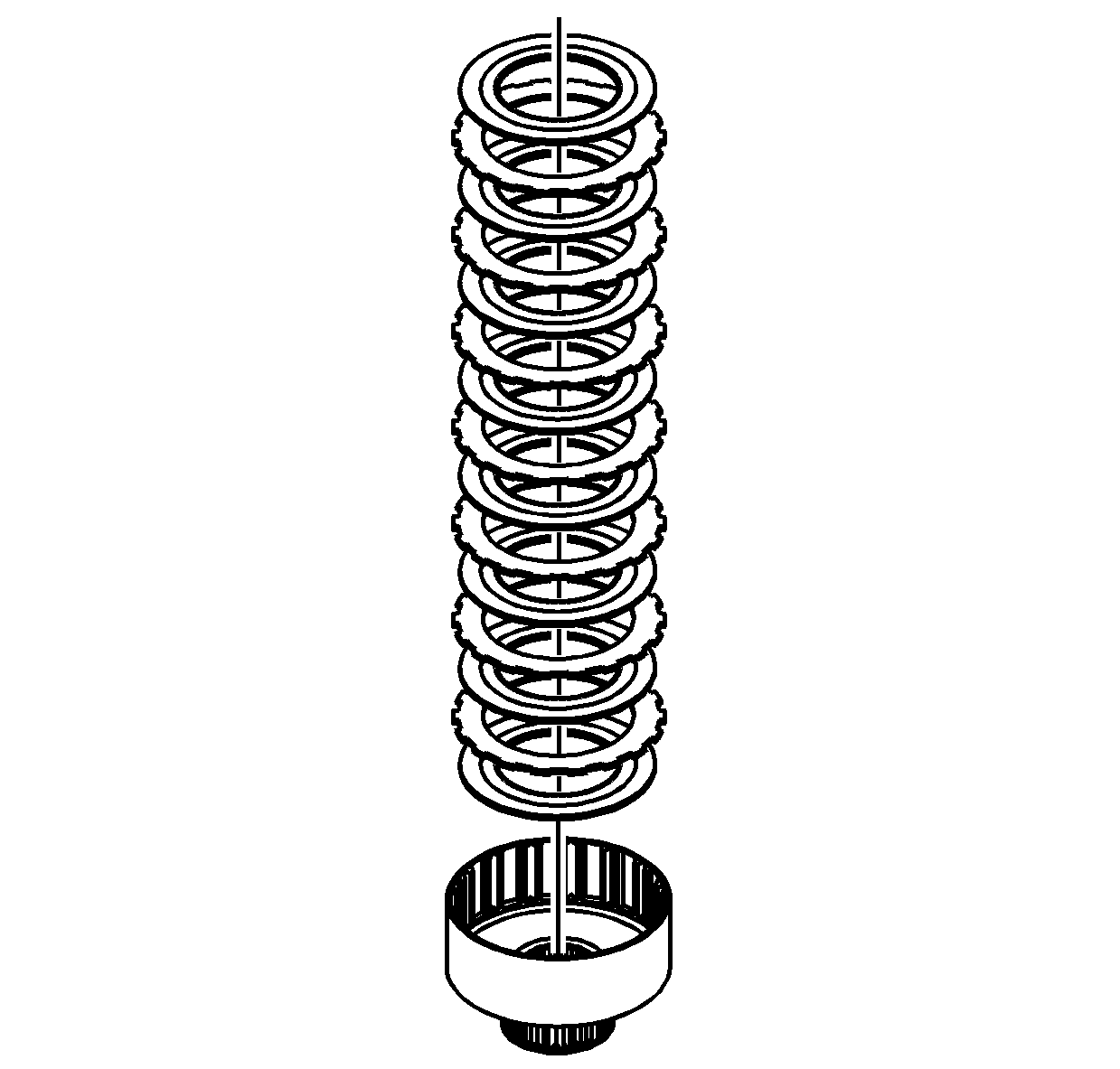
Important: Do not wash the clutch inner friction plates
in cleaning solvent.
- Separate the clutch plates for inspection.
- Remove and discard the shim or shims.
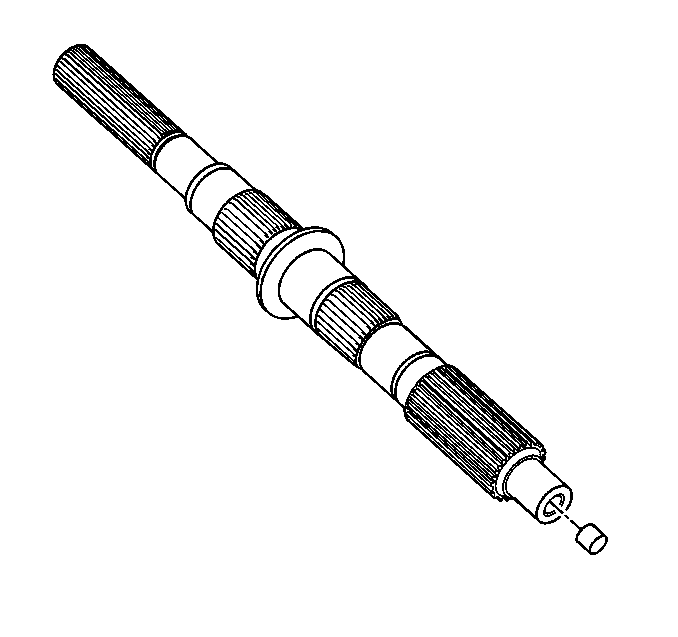
- Remove the oil restrictor from the rear output shaft,
if replacing the shaft.
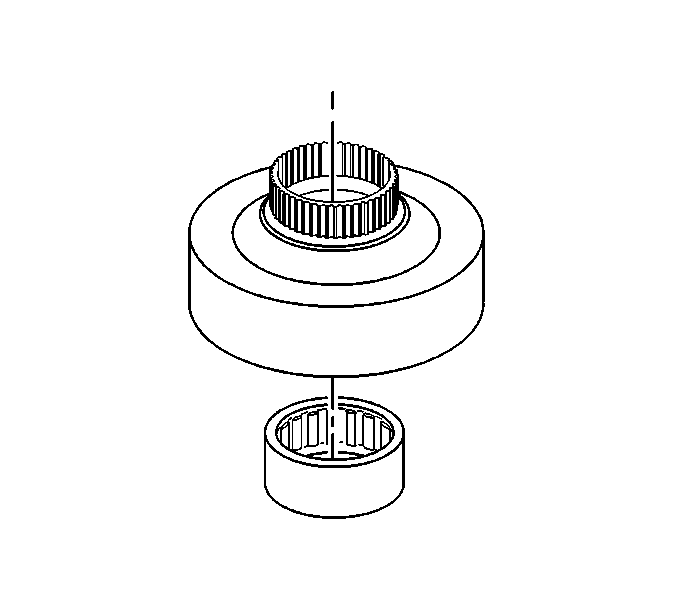
- Inspect the bearing in the clutch housing for being
faulty. Refer to
Transfer Case Cleaning and Inspection
.
- If the bearing is faulty, use a brass drift and a hammer to remove the
bearing.
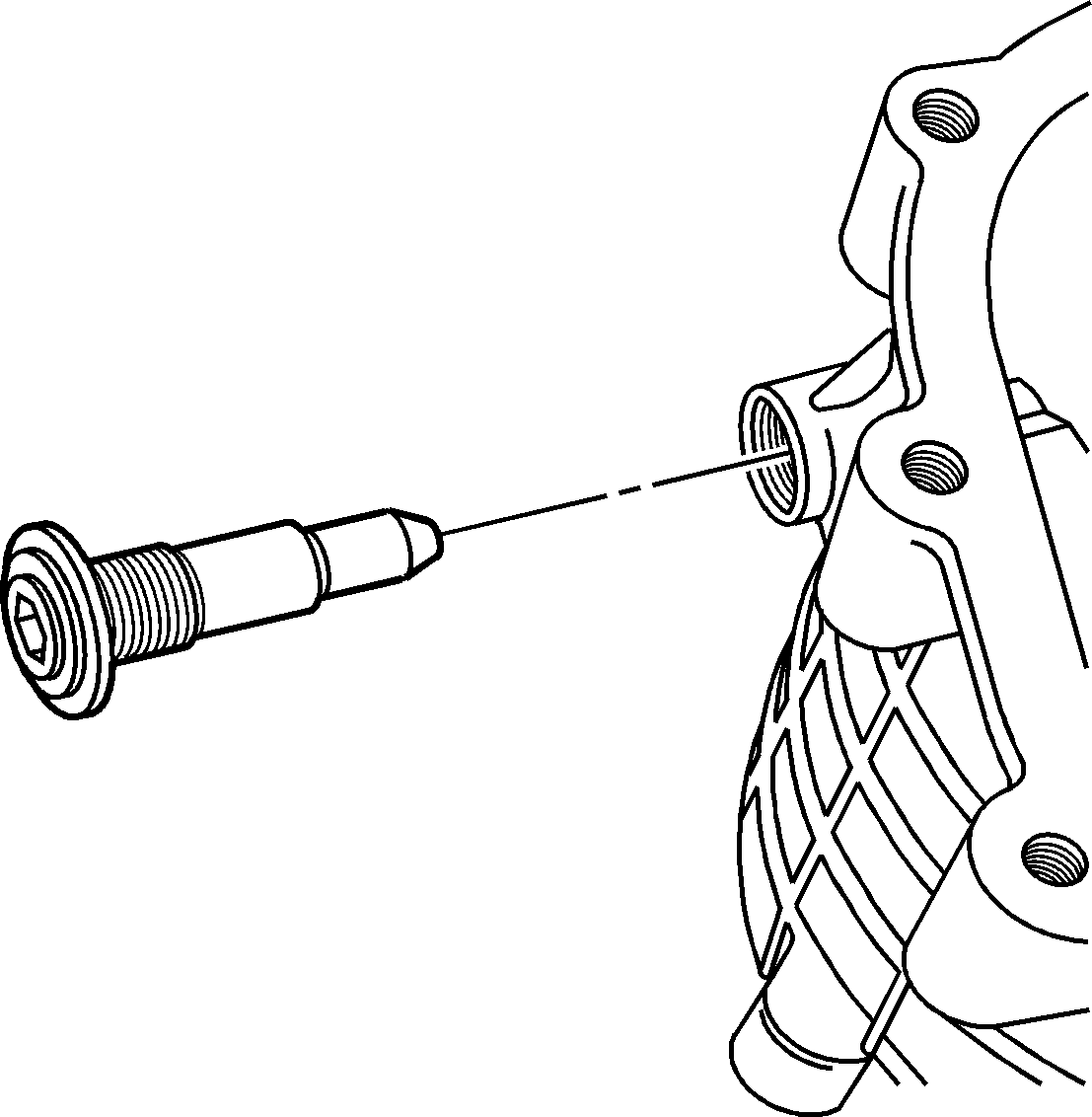
- Remove both of the clutch lever pivot pins with washers
and O-ring seals.
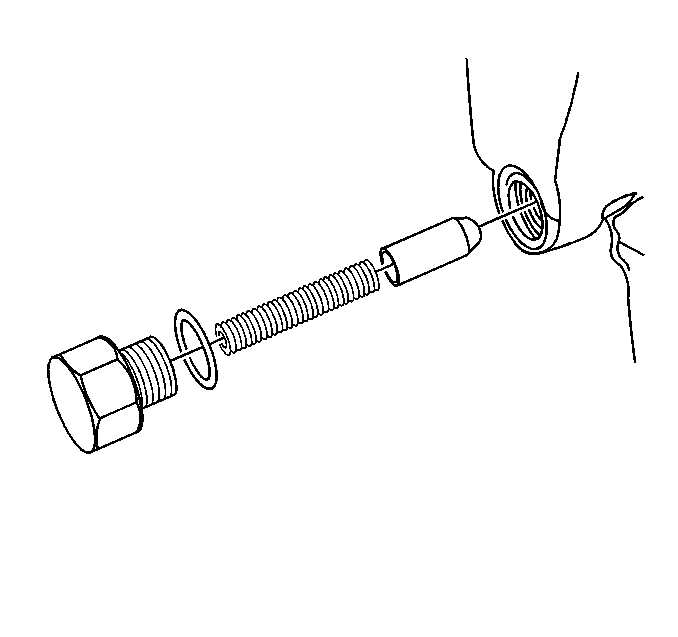
- Remove the shift detent spring bolt.
- Remove the following components:
| • | The shift detent plunger plug O-ring seal |
| • | The shift detent spring |
| • | The shift detent plunger |
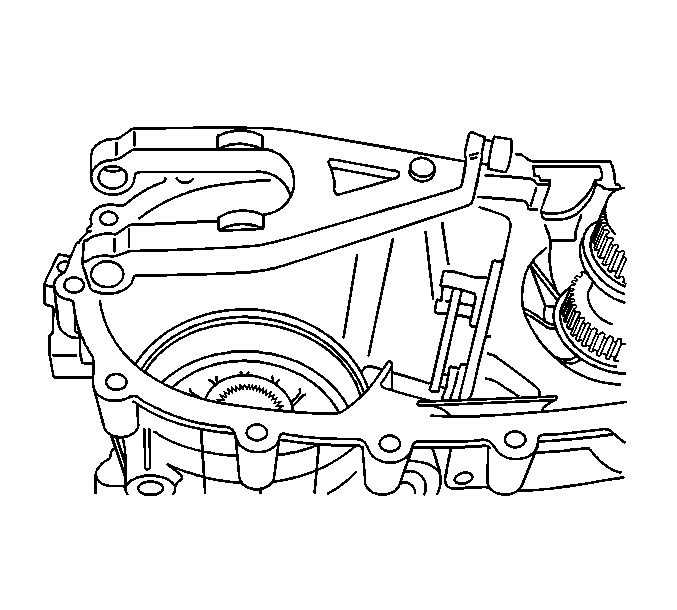
- Remove the clutch lever assembly.
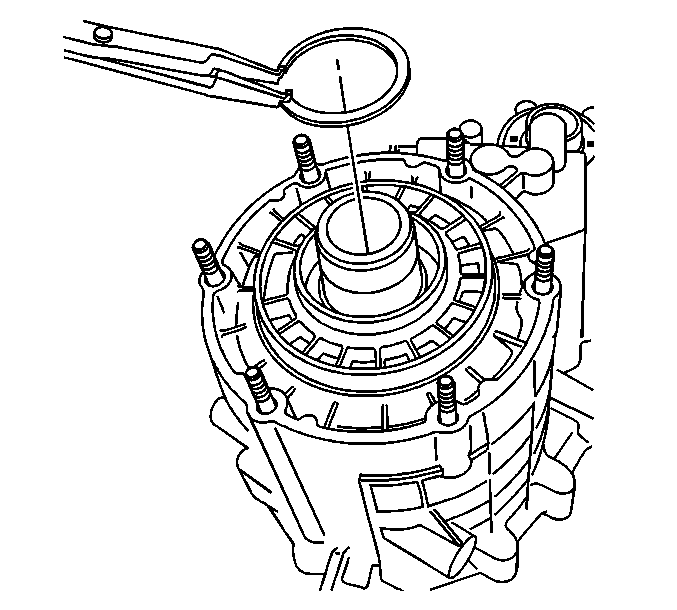
Important: Do not scratch the oil seal surface of the
input shaft with the retaining ring.
- Remove the input shaft retaining ring.
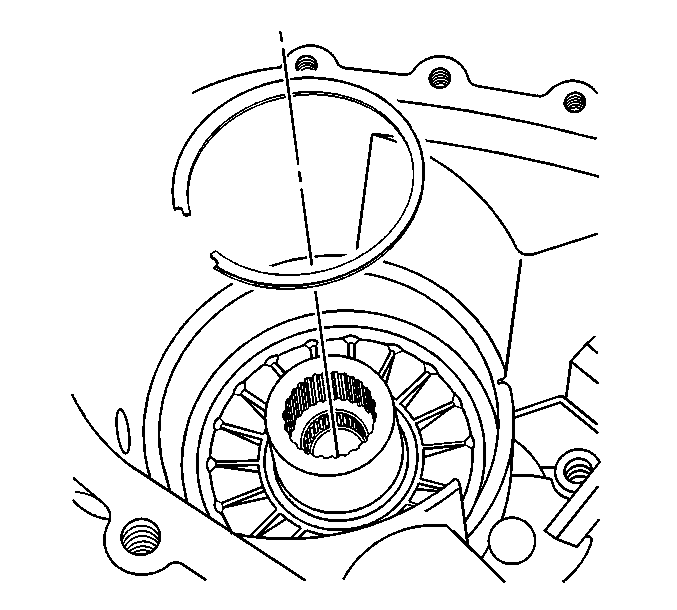
- Remove the input shaft bearing retaining ring.
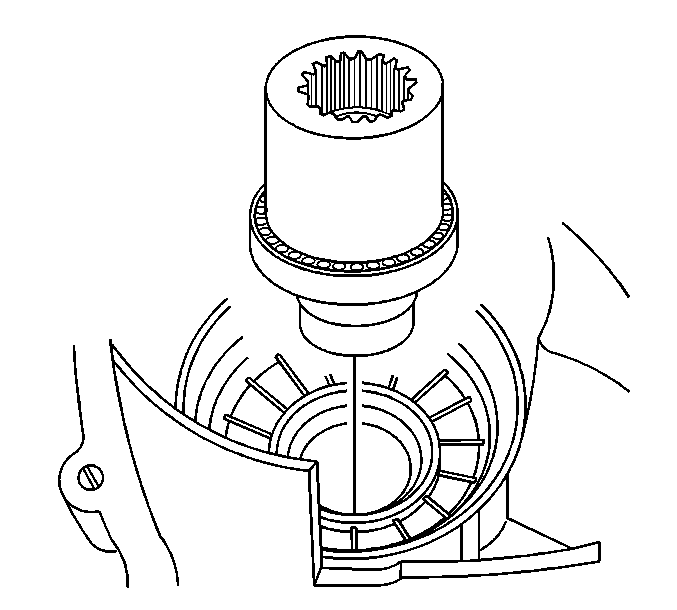
- Remove the input shaft assembly.
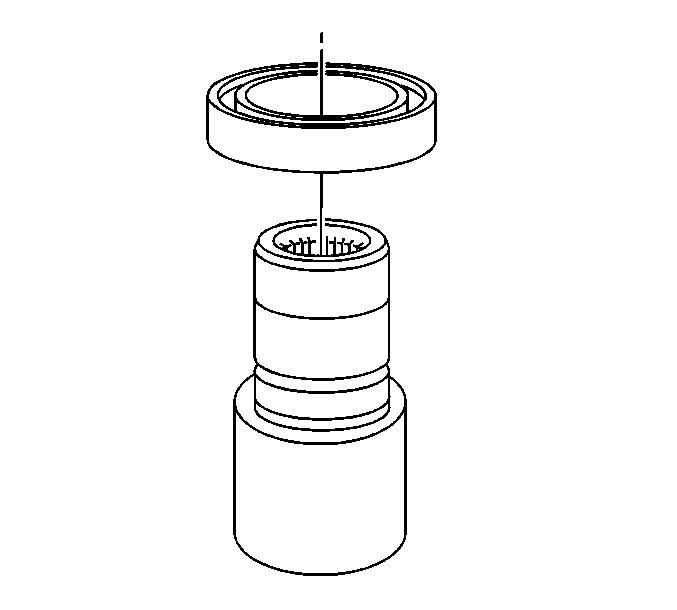
- Remove the input shaft bearing. Do not use the bearing
again after removal.
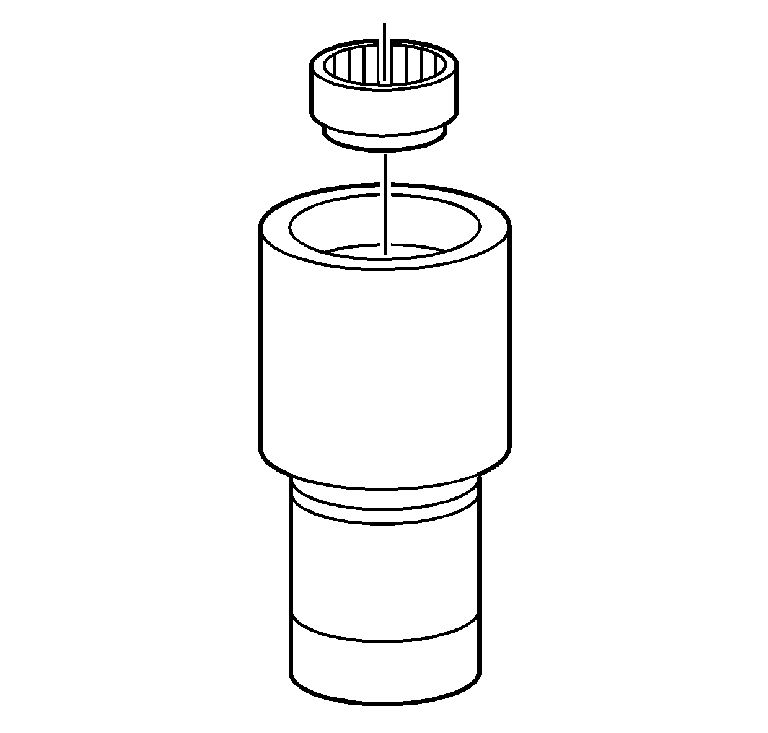
- Using a brass drift, remove the input gear pilot bearing.
Do not use the bearing again after removal.
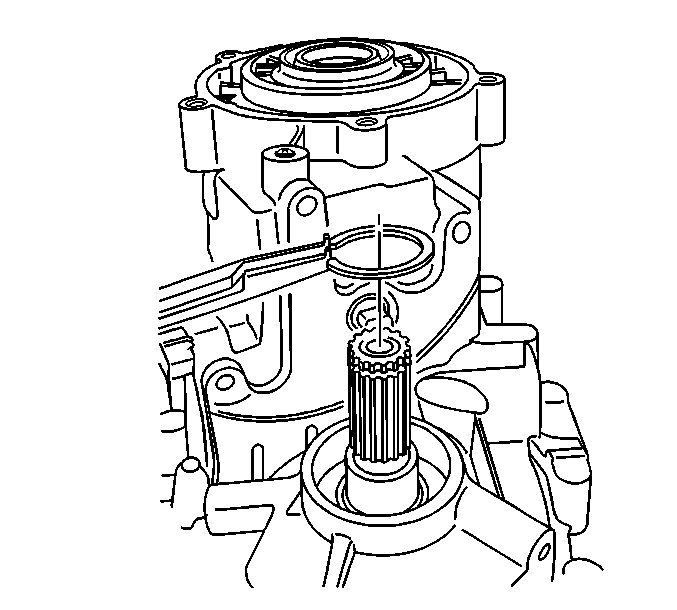
Important: Do not scratch the oil seal surface on the
front output shaft when removing the retaining ring.
- Remove the front output shaft retaining ring.

- Remove the front output shaft assembly.

- If damaged, remove the speed sensor reluctor wheel
from the front output shaft using a hydraulic press. Do not use the speed sensor
reluctor wheel again after removal.
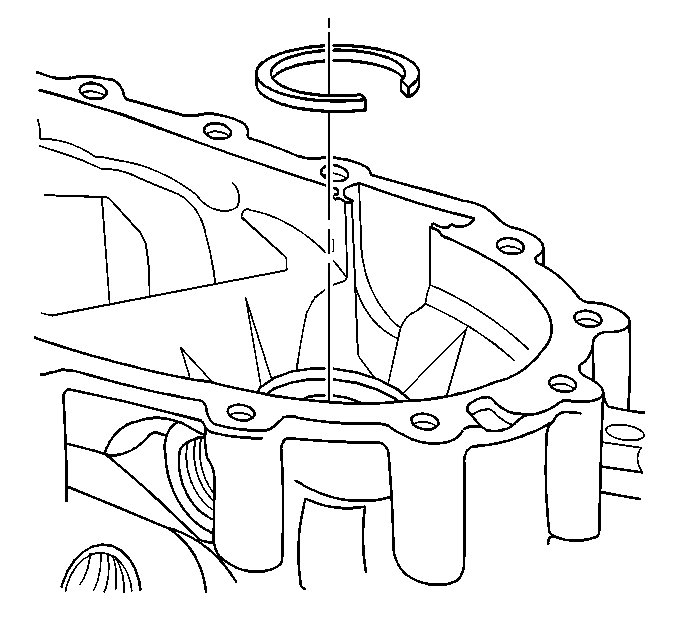
- Remove the front output shaft bearing retaining ring.
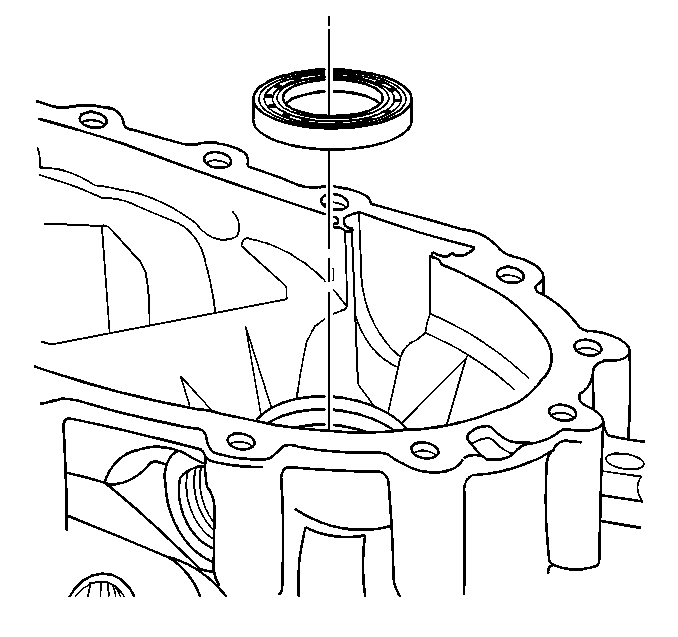
- Remove the front output shaft bearing.
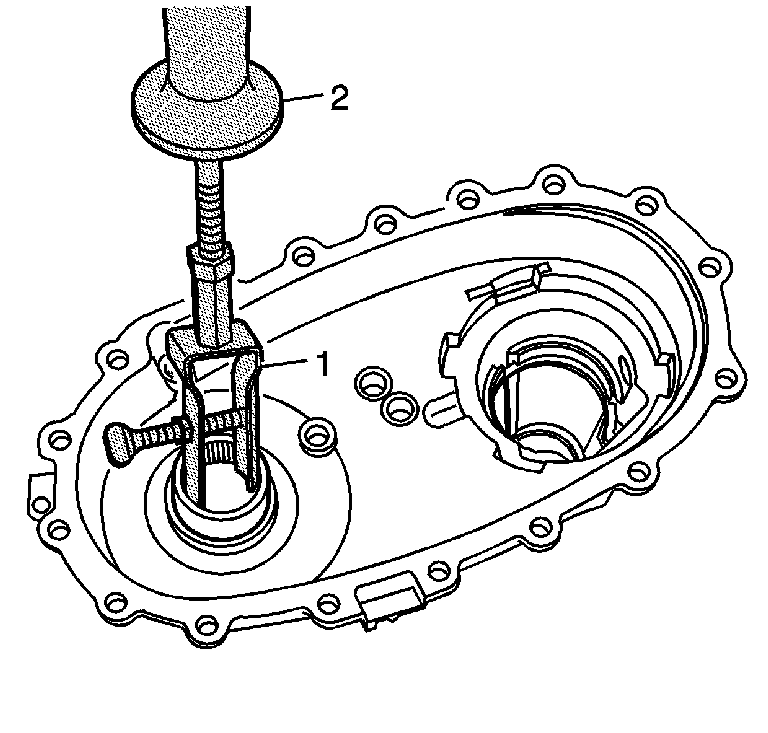
- Inspect the front output shaft rear bearing for being
faulty. Refer to
Transfer Case Cleaning and Inspection
.
- If the bearing is faulty, remove the bearing using the J 23907
(2) and the J 26941
(1).

- Remove the retaining ring for the control actuator
lever shaft.
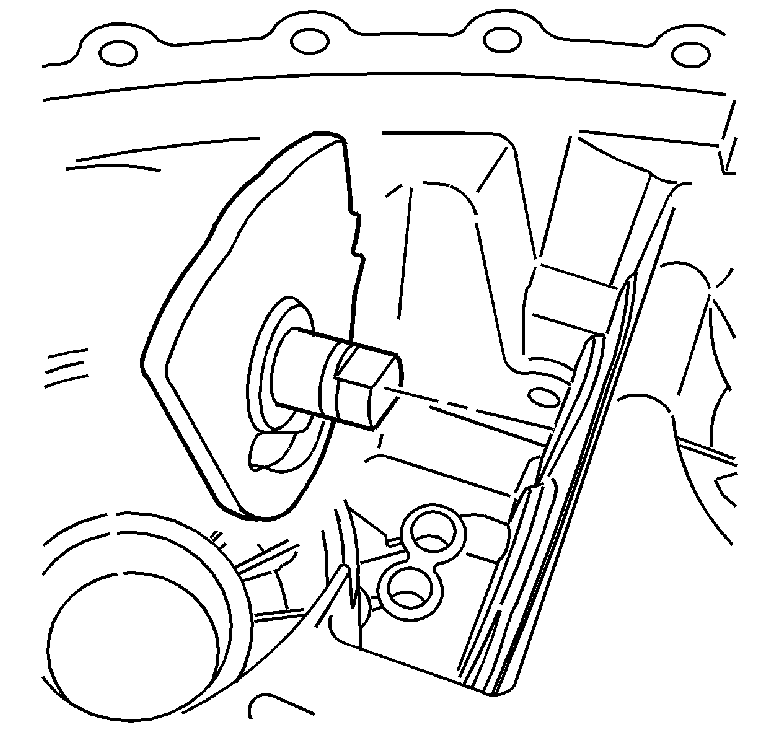
- Remove the control actuator lever shaft.
- Inspect the control actuator lever bearing and seal for being faulty.
Refer to
Transfer Case Cleaning and Inspection
.
- If the bearing is leaking or faulty, remove the bearing from the case.

- Remove the mounting studs, only if they are damaged.
























































